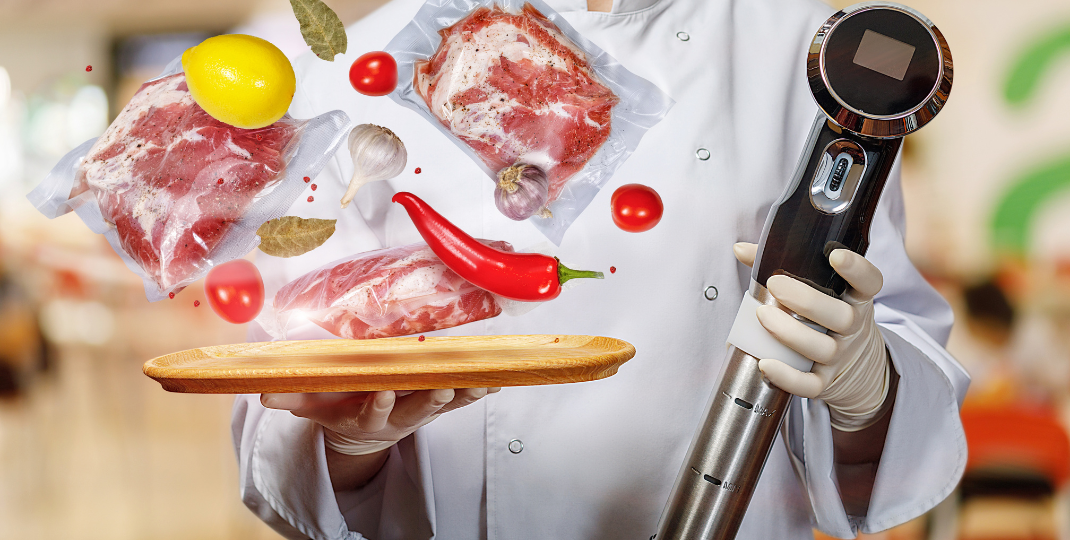Investment opportunities in the cultivated meat industry are gaining traction as more and more consumers seek sustainable and ethical alternatives to traditional animal agriculture. Cultivated meat, also known as lab-grown or cell-based meat, is produced by culturing animal cells in a lab rather than raising and slaughtering animals. This innovative technology has the potential to revolutionize the food industry, providing a solution to feed the growing global population while reducing environmental impact and improving animal welfare. As the demand for cultivated meat continues to rise, investors have the opportunity to support this emerging sector and potentially reap significant financial rewards. However, one key factor that investors must consider is the price of cultivated meat, as it plays a crucial role in determining the market's potential profitability and consumer acceptance.

What are the current investment opportunities available in the cultivated meat industry?
The cultivated meat industry is currently offering several investment opportunities. Firstly, there are opportunities for funding companies involved in research and development to enhance the efficiency and scalability of the production process. Additionally, investors can support startups that are focused on developing alternative protein products using cultivated meat, such as burgers, chicken nuggets, or sausages. There is also potential for investments in companies that provide technology and equipment for cultivating meat, such as bioreactors and cell culture media. Moreover, there are opportunities in supporting businesses working on improving taste, texture, and nutritional profiles of cultivated meat products, as well as those focusing on marketing and distribution strategies to target consumer acceptance and adoption. Overall, the cultivated meat industry offers a range of investment avenues that cater to different aspects of the value chain, from scientific advancements to commercialization efforts.

How do I evaluate the potential returns on investment in cultivated meat?
Evaluating the potential returns on investment in cultivated meat involves considering various factors. Firstly, it is important to assess the market demand and growth prospects for cultivated meat globally, by analyzing consumer preferences, market size, and potential regulatory support. Understanding the competitive landscape, including the presence of established companies and startups, can also provide insights into market opportunities and risks. Additionally, evaluating the technological advancements, cost reductions, and scalability potential of cultivated meat production methods is crucial. Furthermore, assessing the potential environmental benefits and ethical considerations associated with cultivated meat can help gauge its long-term sustainability. Lastly, financial analysis, including projecting revenue and profitability, understanding capital requirements, and considering exit strategies, can provide a comprehensive evaluation of the potential returns on investment in this emerging industry.
Are there any specific risks associated with investing in cultivated meat?
There are several specific risks associated with investing in cultivated meat. Firstly, the technology and processes involved in growing meat from cells are relatively new and evolving, which means there could be unexpected challenges or setbacks that may impact the viability and profitability of the industry. Secondly, regulatory approvals and consumer acceptance are crucial factors for the success of cultivated meat, and any delays or resistance in these areas could pose risks to investors. Additionally, the high capital requirements and long development timelines associated with scaling up production facilities are risks that investors need to consider. Lastly, competition from conventional meat producers and alternative protein sources could limit market share and affect the financial returns on investment. Overall, while cultivated meat holds tremendous potential, it is important for investors to carefully assess and manage these specific risks.
What is the market size and growth potential for cultivated meat?
The market size and growth potential for cultivated meat, also known as lab-grown or cultured meat, is substantial. According to various reports, the global meat market is valued at over $1 trillion annually. As consumer awareness about the environmental and ethical issues associated with traditional animal agriculture grows, there is a significant opportunity for cultivated meat to capture a share of this market. Additionally, the rising global population and increasing demand for protein-rich diets further contribute to the growth potential. The technology is still in its early stages, but with advancements in research and development, regulatory support, and investment, it is expected that cultivated meat will become a viable and sustainable alternative in the future, leading to a potentially massive market size and growth.
How do regulatory frameworks impact investment opportunities in the cultivated meat sector?

Regulatory frameworks have a significant impact on investment opportunities in the cultivated meat sector. These frameworks determine the rules and regulations that govern the production, sale, and marketing of cultivated meat products. Clear and favorable regulatory frameworks can provide certainty and stability for investors, encouraging them to invest in the sector. On the other hand, complex or restrictive regulatory environments can create barriers to entry, increasing the risk and uncertainty associated with investments in cultivated meat. Moreover, a supportive regulatory framework that ensures safety, labeling requirements, and consumer acceptance can enhance market access and create a conducive environment for investment and growth in the cultivated meat sector.

What is the current cost of production for cultivated meat, and how does it compare to traditional meat production?
The current cost of production for cultivated meat, also known as lab-grown or cell-based meat, is relatively high compared to traditional meat production. The initial stages of developing the technology and scaling up production have led to significant costs, making cultivated meat more expensive to produce than conventionally farmed meat. However, as the industry continues to grow and improve efficiency, the cost of production is expected to decrease. Over time, it is anticipated that cultivated meat will become more competitive with traditional meat production in terms of cost.
Are there any factors that could affect the future price of cultivated meat?
Yes, there are several factors that could affect the future price of cultivated meat. Firstly, the cost of research and development, scaling up production, and establishing efficient manufacturing processes will significantly impact the price. Additionally, the availability and cost of inputs such as growth medium, animal cells, and scaffolds for tissue engineering can influence the final price. Another factor is consumer acceptance and demand, as the success of cultivated meat in the market will depend on its competitiveness with traditional meat products. Lastly, regulatory frameworks and government policies regarding production, labeling, and safety standards may also play a role in shaping the future price of cultivated meat.

How do consumer attitudes and acceptance impact the pricing dynamics of cultivated meat?

Consumer attitudes and acceptance play a crucial role in the pricing dynamics of cultivated meat. The willingness of consumers to embrace this new technology and accept it as a viable alternative to traditional meat directly influences the demand for cultivated meat products. If consumers perceive cultivated meat positively, they are more likely to be willing to pay a premium price for these products, creating an environment where higher prices can be sustained. On the other hand, if consumers have reservations or negative attitudes towards cultivated meat, they may be hesitant to try it or unwilling to pay a premium for it, which can impact the pricing strategy and potentially slow down the market penetration of cultivated meat. Thus, consumer attitudes and acceptance significantly shape the pricing dynamics of cultivated meat by influencing demand and consumer willingness to pay.
Investment Opportunities and Cultivated Meat Price: A Promising Avenue for Investors
In conclusion, investment opportunities in cultivated meat are promising and have the potential to revolutionize the food industry. As technology continues to advance and production costs decrease, the price of cultivated meat is expected to become more competitive with traditional animal-based products. This presents an attractive opportunity for investors investment opportunities and cultivated meat price looking to support sustainable and ethical food solutions while also seeking potential financial returns. With growing consumer demand for alternative protein sources and increasing awareness about the environmental impact of conventional meat production, investing in cultivated meat offers a forward-looking and socially responsible investment choice.
